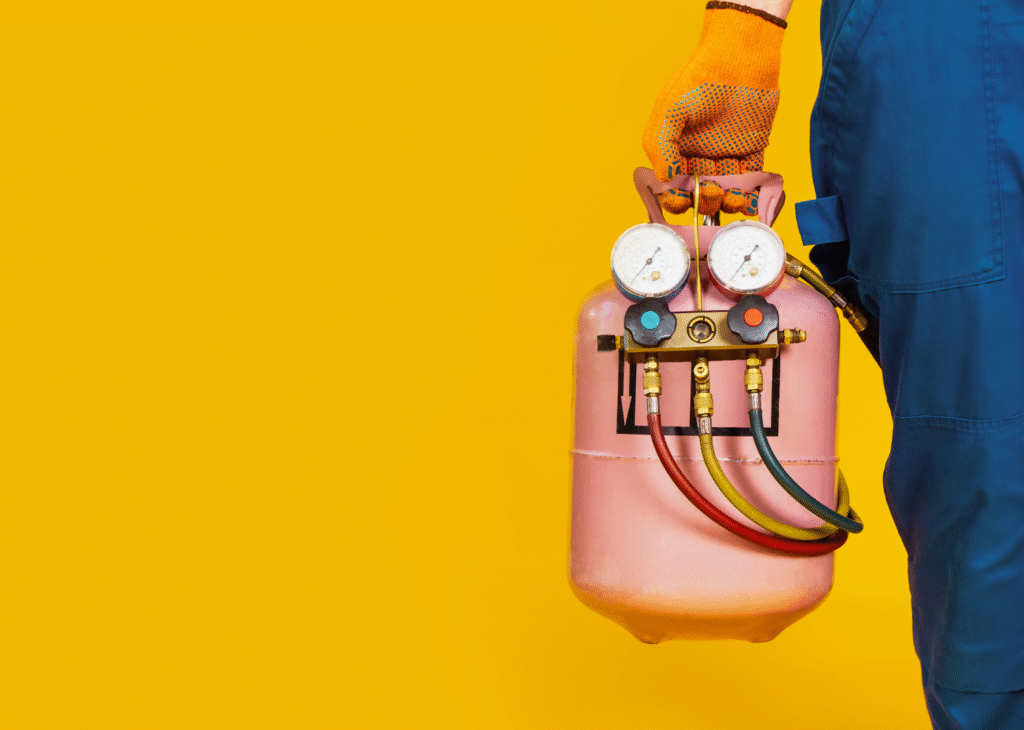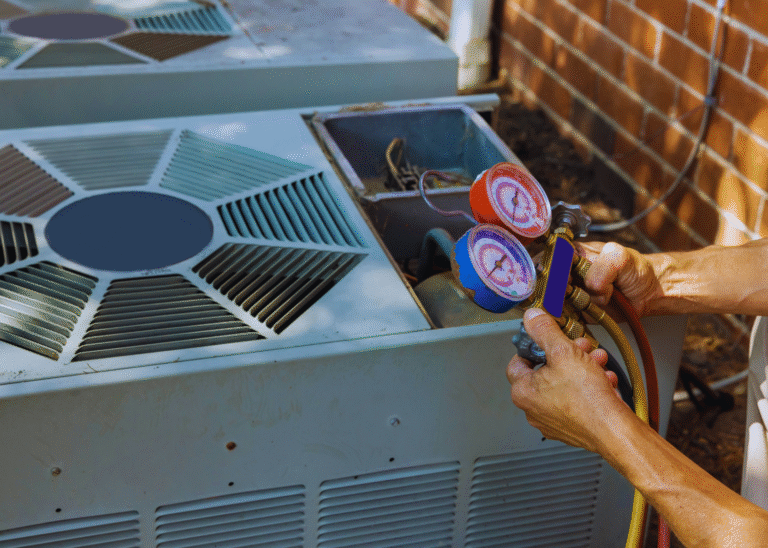(321) 462-4141
Call Us Now
- How It Works
- Why CoolNow
- Services
- No Credit Check Air Conditioning Financing | Discover $0 down HVAC Financing
- HVAC Financing | Easy AC Financing with $0 Down
- Air Conditioning Financing with Bad Credit | Affordable AC Financing, No Credit Needed
- Air Conditioning Financing | Get Approved in minutes, No Credit Check, $0 Down
- Best HVAC Financing Company in Florida | Affordable AC Financing with $0 down, Low Payments and Next-Day Installation
- AC Replacement Financing | Affordable AC Financing, No Credit Check
- Resources

When it’s 98 degrees outside and your AC suddenly quits, price becomes priority #1. You hop online or call a few contractors, and the lowest quote grabs your attention. We get it—nobody likes surprises when it comes to their wallet.
But here’s the uncomfortable truth: that cheaper AC unit might cost you more in the long run.
In this article, we’ll break down seven hidden costs that rarely make it into flashy ads or fast quotes. You’ll learn how cheap AC systems can hurt your wallet, your comfort, and even your home’s resale value—especially in hot, humid places like Florida.
And yes—we’ll explain how changes in refrigerant laws (like the phase-out of R-410A and the rise of R-454B) are driving up risks for budget systems.
Let’s break the cycle of “cheap now, expensive later.”
The Hidden Cost of "Cheaper" AC Units
Table of Contents
ToggleOutdated Refrigerant = Future Headache
Many lower-cost AC units on the market today still use R-410A, a refrigerant that’s being phased out starting in 2025. Why? Because of its high global warming potential (GWP). R-410A is being replaced by newer, environmentally friendlier refrigerants like R-454B.
In today’s scorching climate, replacing your AC is no longer a luxury—it’s a necessity. But many homeowners shopping for a new air conditioner face a tough choice: go with the cheaper quote using outdated 410A refrigerant, or invest in a system that uses the new, environmentally advanced refrigerants like R-32 or R-454B.
Here’s the truth: those “cheaper” systems come with hidden costs—regulatory, environmental, and financial. At CoolNow™, we believe in delivering AC units with new refrigerant that are truly built to last—not just until the next EPA phaseout.
In this article, we’ll unpack why this difference matters, what’s changing in the HVAC world, and why opting for the latest refrigerant tech could save you thousands in the long run.
🔍 Why it matters:
-
By 2025, manufacturers will stop producing new R-410A units entirely.
-
Repairs will get expensive—R-410A supply will shrink and prices will rise.
-
You might face legal and compliance risks after the full phase-out.
📊 Data Snapshot:
According to the U.S. EPA, the price of phased-out refrigerants increases by 200–400% once production ends.
✅ Better Choice: Look for “built to last” systems that use R-454B or other EPA-compliant refrigerants.
Learn more about the 410A phase-out here
1. Poor Energy Efficiency = Higher Bills

Cheaper AC units often come with a low Seasonal Energy Efficiency Ratio (SEER), which measures how efficiently an AC uses electricity. The national SEER minimum in southern states like Florida is 15 SEER.
But some cut-rate units barely scrape by—or don’t meet it at all if they’re “leftover inventory.”
💸 What it costs you:
-
Low SEER = more electricity used per cooling hour
-
Higher power bills month after month
📈 Energy.gov reports:
Replacing a 10 SEER unit with a 16 SEER system can cut cooling costs by 40% annually.
🔧 Tip: Check for ENERGY STAR certification or SEER2 compliance on any unit you’re considering.
Cheap upfront, expensive long-term. That’s the unfortunate math behind many cheaper AC units. According to the U.S. Department of Energy, air conditioners account for about 12% of home energy expenditures each year.
Lower-end systems often carry minimal SEER ratings (Seasonal Energy Efficiency Ratio), which measure cooling output vs. energy use. The national minimum is now 14.3 SEER in the southern U.S.—but some discounted units barely hit that.
Data Point: An ENERGY STAR-certified 18 SEER unit can save $300–$500 per year compared to a 13 SEER system.
Over 10 years? That’s a $3,000–$5,000 hit on your energy bills alone.
2. Outdated Refrigerants = Future Replacement Headaches
Many of the cheaper AC units still being sold today rely on R-410A refrigerant—which is being phased out under the AIM Act.
Starting in 2025, R-410A will no longer be permitted in new residential HVAC systems. That means:
-
Refills will be harder and more expensive
-
Repairs will cost more as technicians pass the cost of sourcing obsolete refrigerants
-
You may be forced to replace the entire unit sooner than expected
Enter R-454B: The Future of Refrigerants
Modern AC systems are moving to R-454B, which is more environmentally friendly and compliant with new regulations. Cheaper AC units don’t offer this upgrade—setting you up for expensive regulatory headaches down the line.
📉 Statistic: HVAC systems using phased-out refrigerants depreciate 20% faster than those using future-compliant refrigerants (EPA source).
What Is the New Refrigerant, and Why Should You Care?

Until recently, R-410A was the go-to refrigerant in most AC systems. But starting in 2025, it’s being phased down by the EPA under the AIM Act due to its high global warming potential (GWP). Its replacements?
👉 R-32 and R-454B, next-generation refrigerants with lower environmental impact, better efficiency, and future compliance.
R-32 & R-454B vs. R-410A: At a Glance
| Feature | R-410A | R-32 | R-454B |
|---|---|---|---|
| Global Warming Potential (GWP) | 2,088 | 675 | 466 |
| Energy Efficiency | Moderate | Higher | Higher |
| Refrigerant Cost | Decreasing supply, price increasing | Stable, growing supply | Stable, growing supply |
| Availability | Phasing out | Industry standard by 2025 | Industry standard by 2025 |
| Flammability Rating | A1 (Non-flammable) | A2L (Mildly flammable) | A2L (Mildly flammable) |
| Maintenance & Repairs | Becoming costlier | Easier to service | Easier to service |
Both R-32 and R-454B are considered the top choices for replacing R-410A, with many major manufacturers adopting R-454B for its ultra-low GWP and strong performance.
R-410A Refrigerant Is on Its Way Out
The EPA’s 2023 Final Rule outlines a 40% reduction in HFC production and consumption starting in 2024, with a 70% cut by 2029. That means R-410A is becoming:
Harder to source
More expensive to recharge
Riskier to invest in
👉 If you’re being quoted a low price on a system today, make sure you know the refrigerant inside. Because that “deal” might cost you a fortune in 3 years.
Source: EPA AIM Act
3. Noisy Operation and Poor Comfort Control
Many budget AC systems skimp on the tech that makes cooling comfortable and quiet:
✔️ Single-stage compressors that blast on/off constantly
✔️ Poor humidity control
✔️ Minimal insulation on ducts and motors
The result? Inconsistent temperatures, high indoor humidity, and a loud background hum that never seems to go away.
Customer Insight:
“We saved $800 choosing the cheaper unit. But now it runs nonstop and our house still feels sticky.” — Orlando homeowner, CoolNow™ customer survey
It’s not just about temperature. Quality AC systems are designed for low decibel levels—even during peak operation.
Lower-tier systems? They buzz, rattle, and hum like it’s 1999.
📢 Did you know?
High-quality systems operate at around 55 decibels—quieter than a conversation.
Cheap systems can hit 70+ decibels, making it hard to sleep, work, or relax.
4. Shorter Lifespan and More Repairs

This one’s simple: cheaper AC units don’t last as long.
Many low-cost HVAC providers are offloading inventory with outdated refrigerants. These units:
-
May not be serviceable in a few years
-
Won’t qualify for future rebates
-
May void warranty coverage as refrigerants are phased out
Choosing AC units with new refrigerant like R-32 or R-454B means you’re investing in systems designed for 10+ years of efficiency and compliance.
While a high-quality system may give you 15–20 years of service, budget models often start failing after just 7–10 years. That means more frequent repairs, emergency breakdowns, and ultimately, early replacement.
🔧 Stat: Homeowners spend an average of $500–$1,200 per year in repairs on units more than 10 years old (HomeAdvisor).
And yes, many of those repairs could’ve been avoided with a better-built unit.
Budget systems aren’t built to endure. They use cheaper components that wear down quickly—especially under Florida’s nonstop cooling load.
🔍 Key Fact:
The average lifespan of a high-quality AC unit is 15–20 years, while many cheaper systems start failing by year 7–10.
The math? Paying half up front might mean paying twice over 15 years.
5. Limited Warranties = More Out-of-Pocket Risk
Many “bargain” HVAC brands offer limited or prorated warranties—sometimes excluding major parts like compressors or coils.
Even worse, if your contractor isn’t licensed or authorized by the brand, your warranty may be voided from day one.
🛠️ Real-World Scenario:
✔️ Contractor installs a cheap system with a 5-year parts warranty.
✔️ 3 years later: compressor fails.
✔️Replacement part covered, but $1,200 labor isn’t.
✅ What to look for:
✔️ Full parts + labor warranties
✔️ Local service teams for faster repairs
✔️ Brands with transparent warranty policies
Budget systems often come with:
-
Shorter warranties (as little as 1 year)
-
Limited coverage (labor not included)
-
Strict fine print that voids coverage for common issues
In contrast, higher-quality systems—like those offered by CoolNow™—include labor and parts for up to 10 years.
💡Tip: Always ask what the warranty actually covers. A “10-year parts warranty” is useless if labor costs aren’t included.
6. Compatibility and Code Issues
Modern ACs come with advanced features like smart thermostats, zoning, auto-diagnostics, and humidity control. These upgrades maximize comfort and savings.
Budget systems often skip these entirely—or require costly add-ons to get the same results.
Also, Cheaper AC units may not comply with:
✅ New local building codes
✅ SEER2 efficiency standards (in effect since 2023)
✅ Updated refrigerant laws
This can cause issues when selling your home or making future upgrades. Some municipalities may even deny permits for non-compliant systems.
📉 What you’re missing:
✔️ Lower utility bills
✔️ Better humidity control
✔️ Remote access and automation
Think HVAC doesn’t affect home value? Think again. Buyers know what they’re getting—and a noisy, outdated system can hurt your offers.
🏠According to Zillow: Homes with new, code-compliant HVAC systems sell for 2.7% more on average than homes with outdated equipment.
A buyer might ask you to lower the price—or fix the system—during negotiations.
7. Financing “Traps” That Cost You More Over Time

Some companies selling cheap HVAC systems push financing terms that seem attractive—but cost you more in the long run:
✔️Deferred interest that activates retroactively
✔️ Loan-first third parties who care more about approval than HVAC performance
✔️ No protection against surprise breakdowns or system mismatches
CoolNow™ does it differently. As both financer and licensed Florida HVAC contractor, we’re able to offer:
✅$0 down
✅ No credit check
✅ Transparent, predictable pricing
✅ Same-day installation
We also back all our work with trained, in-house techs—so you’re never caught in the middle between lender and contractor.
How to Spot a Budget Trap in HVAC Quotes
Not sure if a quote is “too good to be true”? Watch for these red flags:
🚩 Unbranded or off-brand equipment
🚩 No mention of refrigerant type
🚩 Warranty coverage <10 years
🚩 SEER rating below 15
🚩 No breakdown of parts/labor costs
How to Know If a "Cheaper" AC Is Really Worth It

Ask these questions before signing off:
1️⃣ What refrigerant does it use? (Avoid R-410A)
2️⃣ What’s the SEER2 rating?
3️⃣ What’s covered in the warranty?
4️⃣ Does the company offer same-day service and long-term support?
5️⃣ Who installs it—licensed techs or subcontractors?
If you’re not getting clear answers, keep looking.
The Bottom Line: Pay Now or Pay Later
A cheaper AC might cool your home today—but leave you sweating financially tomorrow. From higher energy bills to refrigerant phase-outs, the hidden costs of low-budget systems stack up fast.
When comparing quotes, don’t just ask “How much?” Ask “What am I really getting?”
“Cheap” is rarely cheap when it comes to HVAC. Lower initial costs can easily balloon into thousands in hidden fees, inefficiencies, and early replacement.
Instead, look for systems that are Built to Last:
✅ Use compliant refrigerants like R-454B
✅ Offer modern SEER2 efficiency
✅ Come with comprehensive labor and parts warranties
✅ Are installed by trusted, licensed professionals
CoolNow™ Resources and Further Reading
-
Explore AC financing options here
Looking to replace your AC the right way?
CoolNow™ makes it fast, easy, and affordable to replace your AC with $0 down, no credit check, and next-day installation across Florida. We only install high-efficiency, phase-out compliant systems backed by full warranties.
Contact CoolNow™ for a FREE quote.